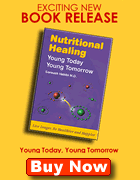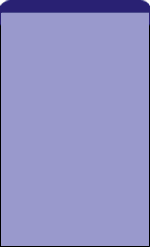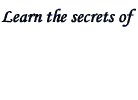 |
By far the most potent antioxidants discovered to date are pycogenols or proanthocyanodins.
These are found in maritime pine bark or grape seed. 5
American Indians used the pine bark for centuries for its anti-cancer and anti-aging
effects. Proanthocyanodins are also found in strawberries, avocadoes and bananas.
It is said that they are 50 times more potent than vitamin E and 20 times more
powerful per mg than vitamin C. Despite the heavy consumption of fatty foods
amongst the French, the incidence of cardiovascular disease is lower due to
having red wine with their meals.
This is known as the "French Paradox" which has contributed to the
effect of proanthocyanodins. Red wine is a good source of proanthocyanodins.
Do not start drinking alcohol heavily. I personally do not recommend alcohol
consumption because of the many side effects associated with it. I would rather
have grape seed extract, which I call red wine without alcohol, and it is much
healthier.
Proanthocyanodins inhibit oxidation of LDL cholesterol, which is responsible
for damage to the arteries.
Proanthocyanodins cross the blood - brain barrier (BBB) and influence their
antioxidant activity in the brain, as the brain cells are largely made of fat,
which is prone to oxidation.
It has been documented that grape seed extract is effective in the prevention
of breast cancer. You might ask. Where is the evidence?
|
 |
There was an article published in the American Medical Journal, Biochemistry,
6 June 2000, volume 78, page 429. It stated that breast cancer is the most common
type of cancer in women and that one out of nine women get it sometime in their
lifetime. We also know that many studies have shown that antioxidants and other
nutrients have been proposed as a very effective inhibitory agent against cancer
initiation, progression and even the incidence of cancer. One of the strongest
antioxidants was extracted from red grape seed. In this study researchers measured
the anti-proliferative effect, that is how much the cancer progresses against
the use of red wine concentrate or that of red grape concentrate. When they
looked at it, they found that there was a dose and a time dependent relationship
of the exposure to the extract as far as reducing the cancer. In other words,
the higher the dose and the more the cancers were exposed to the red grape or
red wine extract, the more inhibition or protection against the growth of the
breast cancers occurred.
Other treatment applications are for heart disease, stroke, hypertension, cancer,
allergies, leg cramps and UVB sun damage to the skin.
In addition, it is used in prevention of diabetic retinopathy (eye damage),
arthritis, haemorrhoids and bleeding.
Grape seed extract and human health
In a study by D. Bagchi et al which was published in the Journal of Toxicology
148 (2000) the antioxidant effect of grape seed proanthocyanidin extract (GSPE)
was assessed against vitamin C, E and beta-carotene. The study focused on a
novel IH636 grape seed extract in vitro and in vivo to assess its scavenging
ability in preventing free radical damage. The study demonstrated that GSPE
is highly bioavailable and provides significantly better protection against
free radicals and free radical-induced lipid peroxidation and DNA damage than
vitamin C, E and beta-carotene. GSPE was also shown to demonstrate cytotoxicity
towards human breast, lung and gastric adenocarcinoma (type of cancer) cells,
while optimising the growth and viability of human gastric mucosal cells. 37
For more detailed information and specific recommendations, please [click here] to become a member of DrHabibi.com
|
 |




